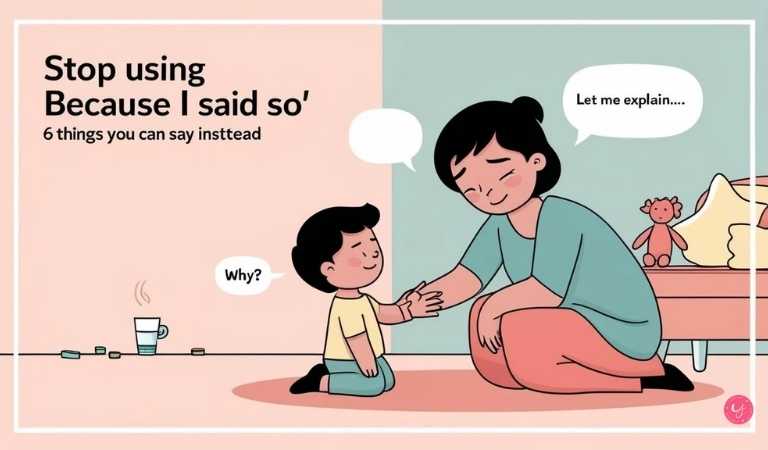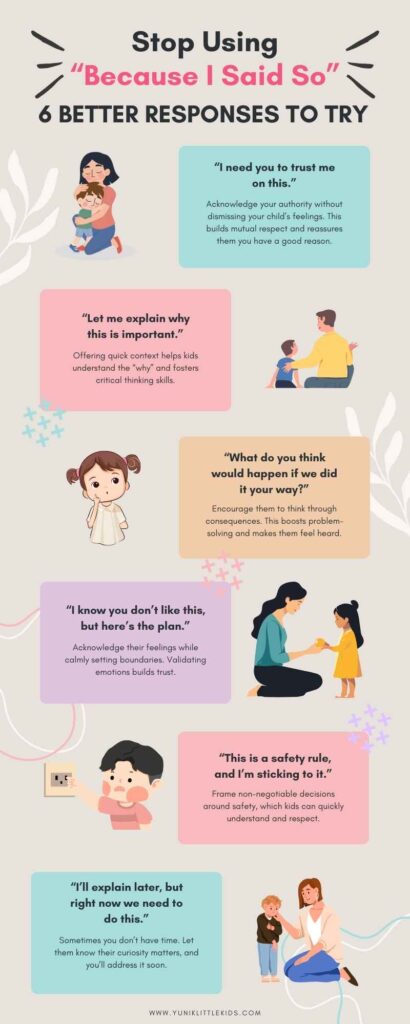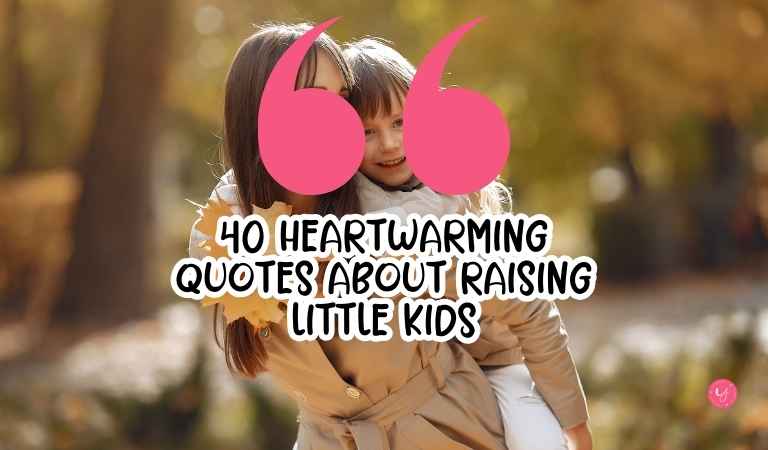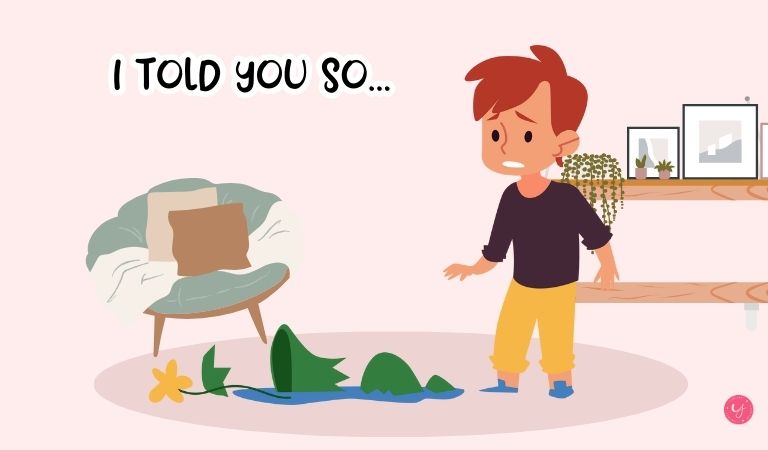Stop using “Because I said so” to your kids – 6 things you can say instead

Have you ever had one of those days where you’re just done? The laundry is piling up, dinner is late, your toddler is melting down over the blue cup, and your older child just won’t stop asking “Why?” about every little thing.
And then, it slips out:
“Because I said so.”
Trust me, I get it.
As moms, we’re stretched thin, and sometimes those four words feel like the quickest escape from an endless cycle of questions.
But have you ever stopped to think about what those words sound like to your child?
I’m not here to guilt you—I’ve said it plenty of times myself.
But over the years, I’ve realized that “Because I said so” isn’t the solution it seems to be. In fact, it can do more harm than good in the long run.
So today, I want to talk about why we might want to rethink this phrase and explore some better ways to respond when our kids challenge us (and our patience!).
Why “Because I Said So” Isn’t Helping (And What Kids Really Hear)
When we say, “Because I said so,” what we really mean is:
I’m too tired to explain right now.
Just trust me on this.
Let’s end this conversation because I have a million other things to do.
But here’s the thing – kids don’t hear that. Here’s what they do hear:
- “Your questions don’t matter.” Kids are naturally curious, and “Why?” is their way of making sense of the world. Dismissing their questions can make them feel unheard.
- “I’m in control, and you’re not.” This phrase reinforces a power dynamic that can leave kids feeling powerless and resentful.
- “You don’t deserve an explanation.” It subtly teaches them that they don’t have a right to understand the reasoning behind decisions—something that can affect their communication and critical thinking skills as they grow.
In short, “Because I said so” shuts down the conversation, and with it, an opportunity to connect, teach, and build trust.
What to Say Instead (And Why It Matters)
I know what you’re thinking: If I can’t say “Because I said so,” what can I say?
The good news is, you don’t need to launch into long, detailed explanations every time your child asks “Why?” Simple, thoughtful responses can go a long way.

Here are six alternatives you can try, along with why they work.
1. “I need you to trust me on this.”
This phrase acknowledges your authority without being dismissive. It tells your child, I have a reason, even if I can’t explain it right now.
Kids need to know that you’re making decisions with their best interests in mind. By asking for trust, you’re fostering a sense of mutual respect.
Example:
Instead of: “Because I said so, that’s why you can’t go outside.”
Try: “I know you really want to go outside, but I need you to trust me. It’s too cold, and I don’t want you to get sick.”
2. “Let me explain why this is important.”
Take a moment to share your reasoning, even if it’s brief. Kids are more likely to cooperate when they understand the “why” behind your decision.
When kids know the purpose of a rule or request, it helps them develop critical thinking skills and see you as fair rather than controlling.
Example:
Instead of: “No, you can’t eat candy before dinner.”
Try: “If you eat candy now, you won’t feel hungry for dinner. Let’s save it for after we eat.”
3. “What do you think would happen if we did it your way?”
Turn their question into a learning opportunity by inviting them to think critically.
This approach encourages kids to consider consequences and helps them feel involved in the decision-making process.
Example:
Instead of: “Because I said so, you can’t leave your toys on the floor.”
Try: “What do you think might happen if your toys stay on the floor? Let’s think about it together.”
4. “I know you don’t like this, but here’s the plan.”
Acknowledge their feelings while setting clear expectations.
Validating their emotions helps kids feel seen and heard, even when they don’t get their way. It shows them that their feelings matter, but boundaries still need to be respected.
Example:
Instead of: “Stop arguing and just do what I said!”
Try: “I know you’re upset about having to clean up, but we need to tidy up before dinner. I’ll help you get started.”
5. “This is a safety rule, and I’m sticking to it.”
For non-negotiable situations, frame your decision as a safety measure.
Safety is a concept that even young kids can understand. When you present your decision as a way to protect them, they’re less likely to see it as arbitrary.
Example:
Instead of: “Because I said so, you can’t climb that!”
Try: “I know climbing looks fun, but it’s not safe. My job is to keep you safe, so we’re not doing that.”
6. “I’ll explain later, but right now we need to do this.”
Sometimes, you genuinely don’t have time to explain. That’s okay—just let your child know that their question matters and you’ll address it when you can.
This approach respects their curiosity while balancing your need to keep things moving.
Example:
Instead of: “Because I said so, get in the car now!”
Try: “We’re in a rush, so I can’t explain right now, but I’ll tell you all about it once we’re in the car.”

By replacing “Because I said so” with such thoughtful responses, you’re not just avoiding a power struggle, you’re laying the groundwork for open communication, mutual respect, and emotional intelligence. You’re teaching your child to think critically, trust your guidance, and value their own voice.
Let’s be real—parenting is messy, and sometimes “Because I said so” will slip out. That’s okay. The goal isn’t perfection, it’s progress.
The more you practice these alternatives, the more natural they’ll feel.
Next time your child asks “Why?” take a deep breath, pick one of these phrases, and watch how the dynamic shifts.
You’ll not only avoid a battle but also strengthen the bond with your child. And that’s a win for both of you.




